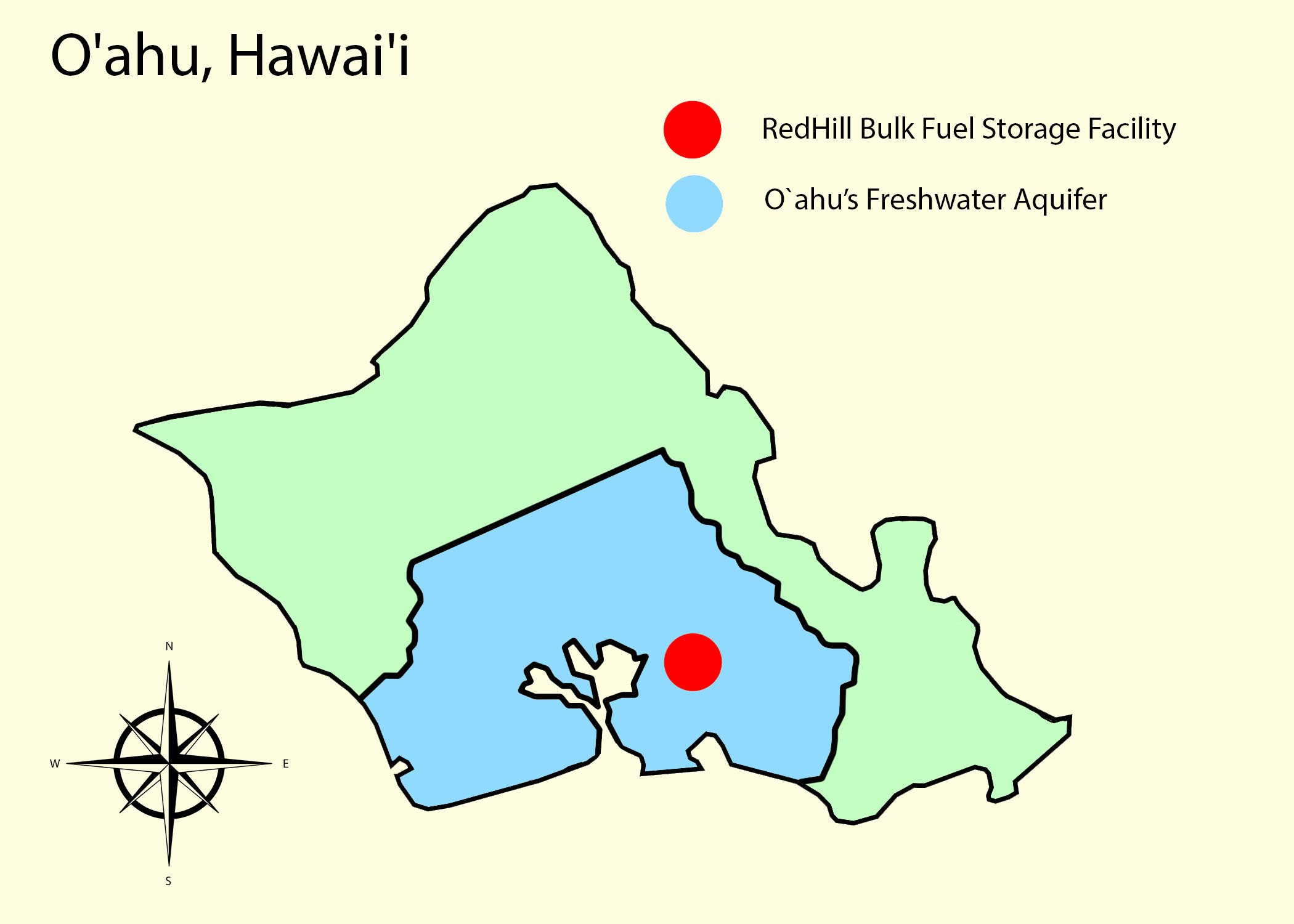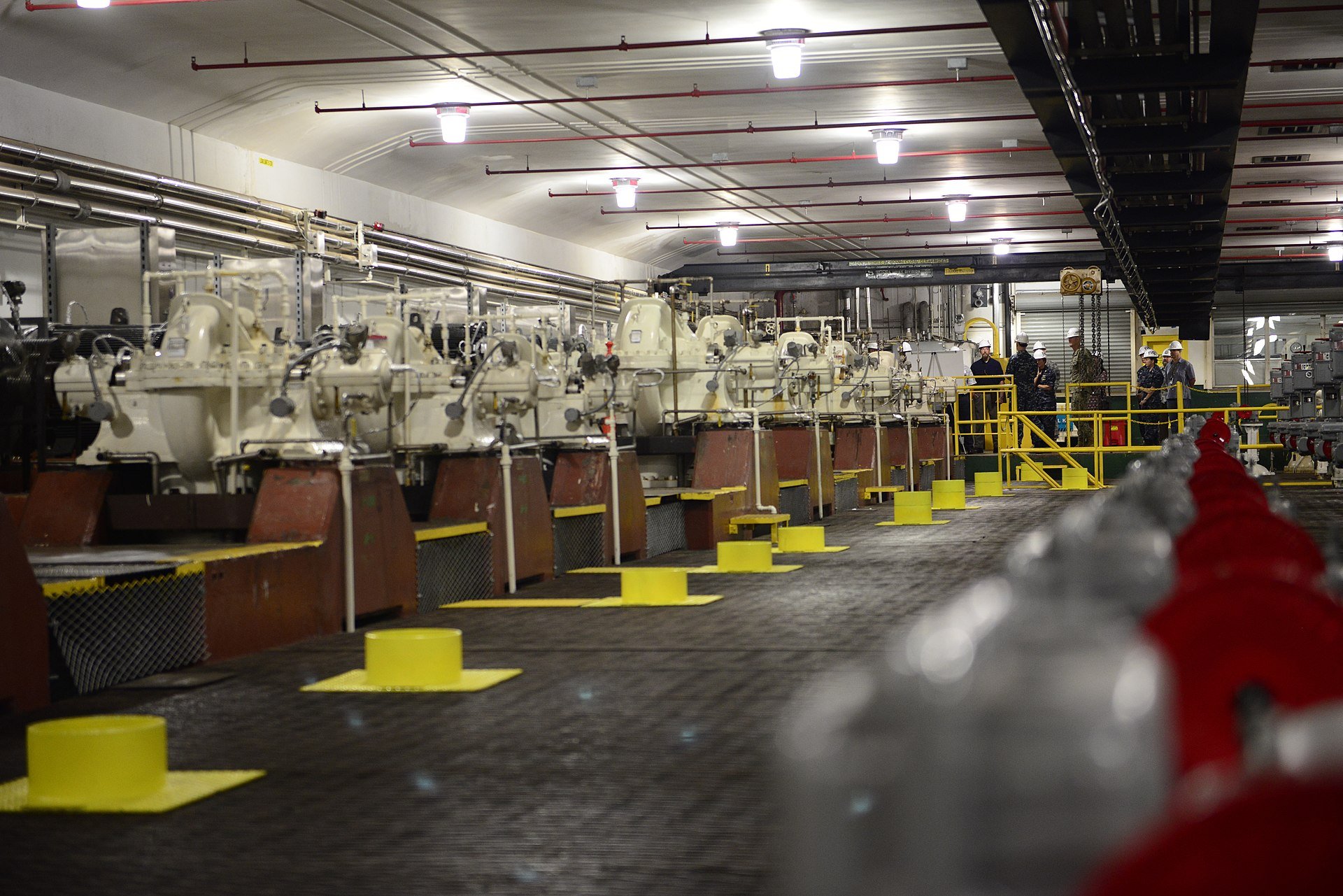Contamination of O'ahu’s Drinking Water is a Long Term Environmental Disaster
By Ling Tsiang, Atmospheric Chemistry ‘23
In the early 1940s, the U.S. Navy established the RedHill Bulk Fuel Storage Facility in Kapūkakī, O'ahu in order to protect their fuel from airstrikes during WWII. It sits underground where the Southern O'ahu freshwater aquifer resides, which supplies the island with fresh drinking water.
Image by Ling Tsiang
Since its hasty construction, an estimated 73 spills totaling roughly 180,000 gallons of fuel have leaked from the facility. Most of these spills were diesel fuel (JP-5) or aqueous film forming foam (AFFF), a fire suppressant. AFFF contains polyfluoroalkyl substances (PFAS) which are commonly known as “forever chemicals.”
Water is collected from the top of the aquifer, which makes contamination events especially dangerous because oil floats in water. Simply put, the more contamination there is, the harder decontamination becomes. Contamination immediately affects 93,000 people and threatens 400,000 people in the area. In recent years, residents complained of an oily sheen on their sink water and reported family members and pets falling ill. Experts are still unclear as to how fuel moves through aquifers, meaning continued contamination may spread to unforeseen environments and further poison the ‘āina (land).
Jan 13th, 2014 – 27,000 gallons of fuel leaked
Dec. 7th, 2019 – up to 1,500 gallons of AFFF spilled
May 6th, 2021 – 1,600 gallons of fuel leaked
Nov. 20, 2021 – 19,000 gallons of water and fuel leaked from fire suppression line
Dec. 3rd, 2021 – Honolulu Board of Water Supply shuts down the Hālawa Water Shaft
Nov. 29th, 2022 – up to 1,300 gallons of AFFF spilled
Initially, the Navy downplayed the severity of their role in poisoning O'ahu’s drinking water and refused to shut down RedHill, despite former Governor David Ige’s pleas. In December 2022, the Navy & the EPA agreed upon a decontamination, defueling, and shutdown plan for the RedHill Storage Facility that is projected to cost $119 million. In comparison to the U.S. Navy’s annual budget of $290 billion, the cost is insignificant.
To recognize the gravity of this situation, it’s important to understand the long, devastating, and complicated relationship the U.S. military has with the Hawaiian Islands and the Hawaiian people. In the long term, while shutting down RedHill is a step in the right direction, demilitarizing O'ahu would greatly benefit the health and wealth of the indigenous population. With only relying on backup water tanks, we are forced to think about the Navy’s repeated egregious actions until the day all the fuel is removed and RedHill is shut down.
To learn more about RedHill and how this is impacting Native Hawaiians, watch this video.



